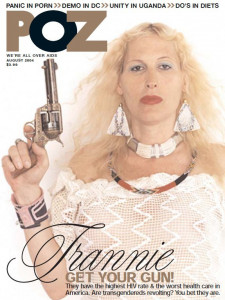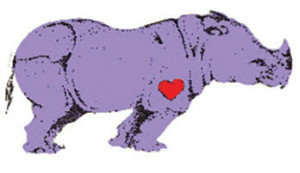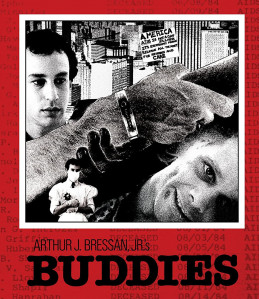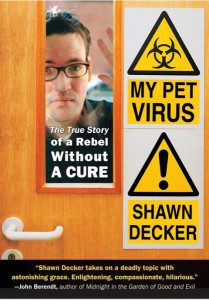AIDS is an everyday experience. The dates on this calendar all relate to the AIDS crisis. Some are globally known; others are drawn from personal experiences.
This online calendar is produced in partnership with Visual AIDS and is an extension of the exhibition “EVERYDAY,” which was curated by Jean Carlomusto, Alexandra Juhasz and Hugh Ryan in 2016. The exhibition and accompanying print calendar explored the AIDS crisis—historically and currently—through the lens of art and ephemera that examines and evidences daily experiences and practices in response to HIV/AIDS. Artists featured in the “EVERYDAY” exhibition were invited to submit as many dates to the calendar as they desired.
We invite you to reflect upon these dates, and this artwork, in dialogue with one another. We also encourage you to submit dates of your own by clicking here. Submissions may include the date of your diagnosis, the date of the loss of a loved one to AIDS-related illness or a significant milestone in your life with HIV/AIDS.
New submissions will be continually added to the calendar because AIDS is not over.
SEPTEMBER 1
2,500 activists marched on President Bush’s vacation home in Kennebunkport, Maine, to demand leadership on AIDS. After a die-in on the road to the Bushes’ house, activists unrolled a 50-foot-long banner outlining a 32-point plan to end the AIDS crisis. (1991)

Chloe Dzubilo is the first transgender person on the cover of POZ magazine. (2004)
Tommy Morrison, a former professional boxer who tested positive for HIV and later denied having the virus, dies at age 44 of a blood infection. (2013)
Sergeant Tanner White, a Marine living with HIV, posts a video on YouTube in which he asks openly gay singer-songwriter Steve Grand to the 2015 Marine Corps Ball. On September 3, Grand posts a video saying, “I accept!” (2015)
SEPTEMBER 2
The Centers for Disease Control and Prevention (CDC) publishes the first occupational HIV exposure precautions for health care workers and allied health professionals. (1983)
SEPTEMBER 3
Photographer/artist Grahame Perry’s ashes are scattered by loved ones in the San Francisco Bay. (2016)
SEPTEMBER 4

John Megna
Actor John Megna, best known for playing Dill in the film To Kill a Mockingbird, dies of AIDS-related complications at age 42. (1995)
SEPTEMBER 5

Activists put a giant condom over Senator Jesse Helms’s house. (1991)Courtesy of Peter Staley
Treatment Action Group members Peter Staley, Sean Strub, Garance Franke-Ruta, Mark Allen, Derek Link, Jim Serafini and Jason Childers cover Senator Jesse Helms’s house with an enormous inflatable condom with the words, “A CONDOM TO STOP UNSAFE POLITICS. HELMS IS DEADLIER THAN A VIRUS.” (1991)
SEPTEMBER 6

The AIDS (Artists Involved with Death & Survival) Show premieres at Theatre Rhinoceros in San Francisco. The play is the subject of a 1986 documentary film of the same name. (1984)
Visiting Desire featuring HIV-positive artist and activist Chloe Dzubilo premieres at the Toronto International Film Festival. (1996)
SEPTEMBER 7
The AIDS-themed Broadway musical Rent take its final bow. (2008)
SEPTEMBER 8
Actor Brad Davis dies of AIDS-related complications at age 41. He played the lead role in Larry Kramer’s The Normal Heart. (1991)
SEPTEMBER 9
The CDC identifies all major routes of HIV transmission—and rules out transmission by casual contact, food, water, air, or environmental surfaces. (1983)
Interior designer Robin L. Jacobsen dies of AIDS-related pneumonia at age 45 in New York City. (1986)

“Body Counts: A Memoir of Activism, Sex, and Survival,” by POZ founder Sean Strub
Body Counts: A Memoir of Activism, Sex, and Survival, by POZ founder Sean Strub is released. (2014)

“Bloody Bloody Andrew Jackson” composer Michael FriedmanYouTube/Broadwaycom
Broadway composer and lyricist Michael Friedman—known for his work on the musical Bloody, Bloody Andrew Jackson—dies at age 41. His death is a reminder to many that people continue to die of AIDS-related illnesses. (2017)
SEPTEMBER 10
Frank Oldham, former CEO of the National Association of People with AIDS, is indicted on six counts of stealing from the now-defunct organization. He later pleads guilty and is sentenced to six months in jail. (2015)
SEPTEMBER 11
Nick Rhoades, who in May was sentenced in Iowa to 25 years in prison for failing to disclose his HIV status to a sexual partner who didn’t contract HIV, has his sentence reduced to five years’ probation without jail time. (2009)
Color Dot Connect: Curtis Carman and John Hanning exhibit presented by Visual AIDS opens at Mixed Greens gallery. (2014)

The film And the Band Played On, based on the book by Randy Shilts, airs on HBO. (1993)
SEPTEMBER 12

Buddies, the first film to deal with HIV and AIDS, is released in theaters in San Francisco. (1985)

Anthony PerkinsGetty Images
Actor Anthony Perkins, known for playing Norman Bates in Psycho, dies of AIDS-related pneumonia at age 60. (1992)
The PWA Housing Committee organizes a demonstration to make AIDS housing an issue in New York City Council elections. (1993)
The Department of Justice announces a $715,000 settlement in favor of a boy who was denied admission to the Milton Hershey School because he is living with HIV. (2012)
The first-ever Global Female Condom Day raises awareness of the female (internal) condom as an option for the prevention of pregnancy and HIV. The internal condom can be inserted into the vagina or anus. (2012)
SEPTEMBER 13
ACT UP Philadelphia’s first demonstration, held outside the Liberty Bell, calls for increased local funding for AIDS. (1987)
SEPTEMBER 14
ACT UP’s Sell Welcome action at the New York Stock Exchange stops all trading for an unprecedented 30 minutes. (1989)

Gareth Thomas discloses he is living with HIV.Twitter/@gareththomas14
Former Wales rugby star Gareth Thomas announces publicly that he is living with HIV. (2019)
SEPTEMBER 15
The Congressional HIV/AIDS Caucus, a bipartisan group of legislators committed to ending the HIV/AIDS epidemic, improving the lives of those living with HIV,= and ensuring that everyone is informed and knows their status is founded. (2011)
SEPTEMBER 16
ACT UP NY joins ACT UP Long Island in a demonstration protesting the lack of AIDS housing on Long Island. (1989)
SEPTEMBER 17
President Ronald Reagan mentions AIDS publicly for the first time during a press conference. (1985)

“The Other City” poster
The Other City, a documentary, about the staggering HIV rates in Washington, DC, premieres. (2010)
SEPTEMBER 18

National HIV/AIDS and Aging Awareness Day
SEPTEMBER 19
Sweden becomes the first country to meet the UN 90-90-90 goal (90% of people living with HIV know their status, 90% of them are on sustained treatment, and 90% of those people achieve viral suppression). (2016)
SEPTEMBER 20
SEPTEMBER 21
The nation’s first Kaposi sarcoma clinic opens at the University of California San Francisco Medical Center. (1981)

How to Survive a Plague opens in limited release in theaters in the United States. The film is nominated for the Academy Award for Best Documentary. (2012)

“My Pet Virus” by Shawn Decker
HIV activist and POZ blogger Shawn Decker releases his memoir, My Pet Virus: The True Story of a Rebel Without a Cure. (2006)
The Positive Justice Project, a campaign of the Center for HIV Law and Policy, launches to combat HIV-related stigma and discrimination against people with HIV by the criminal justice system. (2010)
SEPTEMBER 22
The National Academy of Sciences concludes that syringe exchange programs should be regarded as an effective component of a comprehensive strategy to prevent infectious disease. (1995)
Positively Aware launches the anti-stigma campaign “A Day With HIV,” which encourages people living with and affected by HIV to photograph a moment of their day and share it on social media. (2010)

POZ editor-in-chief Regan Hofmann releases her memoir, I Have Something to Tell You. (2009)
SEPTEMBER 23
REPEAL Act proposes a review of all laws, policies, and regulations regarding criminal prosecution for HIV-related offenses in U.S. (2011)
SEPTEMBER 24
The Centers for Disease Control and Prevention uses the term “AIDS” (Acquired Immune Deficiency Syndrome) for the first time. (1982)
The CDC releases revised HIV testing recommendations for health care settings, recommending routine HIV screening for all individuals ages 13 to 64 and yearly screening for those at high risk. (2006)
SEPTEMBER 25
Artist and filmmaker Jack Smith dies of AIDS-related complications. (1989)
Let’s Kick ASS (AIDS Survivor Syndrome), a grassroots movement empowering long-term survivors, is founded. (2013)
SEPTEMBER 26
Ken Meeks, a doctor and GMHC board member whose photo was included in a series published by Life magazine in 1986, dies of AIDS-related causes. The photo, Ken Meeks, Patient with AIDS, Being Cared for by a Friend, San Francisco, California, was named World Press Photo of the Year later that year. (1986)
Magic Johnson resigns from the National Commission on AIDS, stating in a letter to President Bush that his administration has “utterly ignored” the commission’s recommendations and “dropped the ball” on AIDS. Twenty-five years later, in August 2017, six members of the Presidential Advisory Council on HIV/AIDS resign, stating that President Trump “simply does not care.” (1992)

Jeanie Boulet portrayed by actress Gloria Reuben
On the TV show ER, Jeanie Boulet (portrayed by actress Gloria Reuben) tests positive for HIV. (1996)
The Food and Drug Administration rules that the labeling of latex condoms must contain an expiration date. (1997)
The U.S. Food and Drug Administration approves Combivir, the first combination of two antiretroviral drugs in one tablet, which makes it easier for people living with HIV to take their medications. (1997)
Visual AIDS launches DUETS: Stephen Andrews and Gregg Bordowitz In Conversation. (2014)
SEPTEMBER 27

National Gay Men’s HIV/AIDS Awareness Day
The FDA issues a final order to change the name of the single-use female condom to “single-use internal condom,” which de-genders the prevention tool, and to reclassify it as a class II medical device, making it easier for manufacturers seeking approval for existing and new versions of internal condoms. (2018)
SEPTEMBER 28
Representatives Phillip Burton (D–Calif.) and Ted Weiss (D–N.Y.) introduce the first legislation to allocate funding for AIDS research. The resolution dies in committee, and Congress does not approve the first dedicated funding for AIDS research and treatment until July 1983. (1982)
SEPTEMBER 29

Former child star Danny Pintauro (“Who’s the Boss?”) reveals he’s been living with HIV since 2003 on the TV show Oprah: Where Are They Now? (2015)
Former child star Danny Pintauro (Who’s the Boss?) reveals he’s been living with HIV since 2003 on the TV show Oprah: Where Are They Now? (2015)
SEPTEMBER 30

Joseph Sonnabend interviewed by Charlie Rose in 1993Charlie Rose LLC
New York’s attorney general and Lambda Legal file the first HIV-related discrimination lawsuit on behalf of Joseph Sonnabend, MD, and his patients. (1983)
The Centers for Disease Control and Prevention launches the first AIDS-related public service announcements, “America Responds to AIDS.” The campaign encourages a dialogue about HIV and AIDS and kicks off the newly designated AIDS Awareness Month in October. (1987)
Geoffrey Bowers, an American lawyer who was the plaintiff in one of the first HIV discrimination cases and partly inspired the film Philadelphia, dies of AIDS-related complications at age 33. (1987)
Senate Bill 1007 Mandatory Testing of Prostitutes was signed into law in California. (1988)
Fashion designer Mondo Guerra, a contestant on season 8 of Project Runway, reveals that he is HIV positive during the runway panel. (2010)
The first Road to AIDS 2012 town hall meeting kicks off in San Francisco. This is the first of 15 meetings to be held across the country, leading up to the XIX International AIDS Conference, to be held July 22 through 27, 2012, in Washington, DC. (2011)
The World Health Organization recommends that all people living with HIV worldwide should receive antiretroviral treatment and that those with “substantial” risk for the virus should be offered Truvada (tenofovir/emtricitabine) as pre-exposure prophylaxis (PrEP). (2015)

Timothy Ray BrownToby Burditt
Timothy Ray Brown, the first person to be cured of HIV, dies at age 54 after a five-month battle with leukemia. Formerly known as the Berlin Patient, Brown was on antiretroviral treatment for his HIV when he was first diagnosed with leukemia in 2006. He underwent two bone marrow transplants, which used stem cells from a donor with a rare genetic mutation that blocks HIV from entering cells. The transplants led to sustained HIV remission and his cure. (2020)
About the Artwork

Randy “freedom clay” Rogers, We Are All the Face of HIV/AIDS, 2012, Acrylic on canvas
In the midst of the global pandemic of HIV/AIDS, I was proud to see community based participatory research done in Durham, NC that methodically brought young Black adults (18-30), community members and social scientists together to have a real conversation about ways to decrease HIV infection via increasing awareness, examining reception and potential engagement in HIV biomedical research in this area of the country. Our attitude about HIV and the people who are disproportionately infected plays a significant role in HIV prevalence and incidence around the world. We are all the face of HIV and together, we can change the “face” and the “state” of HIV.
—Randy “freedom clay” Rogers

Founded in 1988, Visual AIDS is the only contemporary arts organization fully committed to raising AIDS awareness and creating dialogue around HIV issues today, by producing and presenting visual art projects, exhibitions, public forums and publications—while assisting artists living with HIV/AIDS. Visual AIDS is committed to preserving and honoring the work of artists with HIV/AIDS and the artistic contributions of the AIDS movement.







Comments
Comments